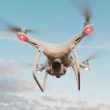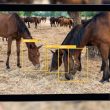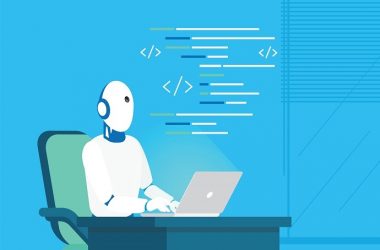Executive Summary:
Animal detection solutions have become a potent tool for numerous applications in the rapidly changing field of artificial intelligence. Explore how this technology might be modified to fulfill particular objectives by customizing AI animal detection solutions for unique use cases.
Introduction:
Artificial intelligence has made incredible strides in the digital age, and one particularly exciting application is the science of animal detection. AI animal detection solutions are revolutionizing various fields, from protecting endangered animals to improving agricultural methods. However, realizing their full potential frequently calls for a customized strategy.
This blog explores the art of customizing AI animal detection solutions for unique use cases and the effects of this strategy in various contexts.
The Paradigm Shift: Tailoring AI Animal Detection Solutions from Generic to Custom
Traditionally, generic models that could recognize a specified species in a controlled environment were used to develop AI animal identification solutions. However, when confronted with various and unique cases, the shortcomings of such standardized procedures became clear.
Custom AI animal detection tools that can accommodate the nuances of different use cases are urgently needed. Customizing AI animal detection solutions may significantly increase efficiency and accuracy in various applications, including protecting crops from wildlife infiltration and tracking elusive species in their natural habitat.
The Importance of Tailored Customization for Improving Precision
A one-size-fits-all approach to animal identification frequently fails since many different habitats, species behaviors, and environmental factors exist. The ability to modify AI animal detection solutions enables stakeholders to adjust algorithms, sensors, and data processing methods in accordance with the particular requirements of the environment.
For instance, a wildlife reserve looking to track down elusive nocturnal animals will have different requirements than a marine biology institute looking to track down submerged critters. These businesses may greatly improve the accuracy and dependability of their animal detection efforts by customizing AI animal detection solutions.
Customized AI Animal Detection Use Cases:
- Habitat Monitoring for Endangered Species Protection:
Customized AI animal detection systems are used to protect endangered species by keeping an eye on their environments. For instance, conservationists have developed AI algorithms in the Borneo jungles to find the elusive Bornean orangutans hidden in dense vegetation.
This modification, which considers their distinctive size and color, enables precise tracking, assisting in comprehending their population dynamics and developing tailored conservation initiatives.
- Wildlife Management at Airports:
Wildlife on runways poses problems for airports frequently and poses a safety risk. Customizing AI animal detection solutions can help identify specific species that could endanger aircraft. Airports can prevent wildlife, guaranteeing safer takeoffs and landings, by concentrating on birds’ and other animals’ behaviors and movement patterns.
- Marine Life Conservation and Research:
Marine conservation initiatives greatly benefit from the use of tailored AI technologies. Using underwater camera systems, marine biologists may discover and monitor particular species, such as whales or sharks, by customizing AI algorithms.
Researchers get important insights into the movements and behaviors of these magnificent creatures by considering ocean conditions and behavioral patterns.
- Monitoring Agricultural Biodiversity:
Customizing AI animal detection solutions for the agricultural sector also helps to protect field biodiversity. Farmers are working with AI experts to create systems to distinguish between helpful insects, pests, and pollinators.
Farmers may promote natural pest control strategies and reduce the ecological impact of agricultural practices by using fine-tuned AI models to recognize specific species and behaviors.
- Fisheries Management:
By recognizing and tracking catch compositions, specialized AI systems aid in the sustainability of fisheries. Fishing regulations can be enforced and overfishing reduced with AI models that fisheries officials can tweak to distinguish between different fish species.
By personalizing the system, authorities are given the tools to collect data more efficiently and preserve marine environments with educated judgments.
- Human-Wildlife Conflict Mitigation:
Customizations in AI animal detection solutions are essential for reducing conflict between people and wildlife. Farmers can get immediate notifications when animals known to cause crop damage are found close to their fields by mixing real-time data from remote cameras with AI-powered detection.
This preemptive approach eliminates the need for harmful animal control tactics while simultaneously minimizing economic losses. A more peaceful cohabitation between people and wildlife is ensured by customizing the AI system to recognize particular nuisance species precisely.
Conclusion:
Incorporating AI animal Counting solutions has ushered in a new era of conservation, study, and peaceful cohabitation in the complex web of our planet’s ecosystems. The ability to personalize these AI solutions has been demonstrated to be a cornerstone of advancement as we manage a world that is changing quickly.
The landscape of wildlife management and comprehension is changing due to the interaction between technology and the special requirements of various species and settings.
The adventure of customizing AI animal detection solutions is far from complete, as we stand on the threshold of a future full of opportunities. This voyage demonstrates our dedication to comprehending, protecting, and coexisting with nature.
The nexus of technology and ecology is a space where the lines between fantasy and reality dissolve, where algorithms pick up on the rhythms of life, and where the stewardship of the Earth by humans finds a compelling ally in the form of tailored AI solutions.










